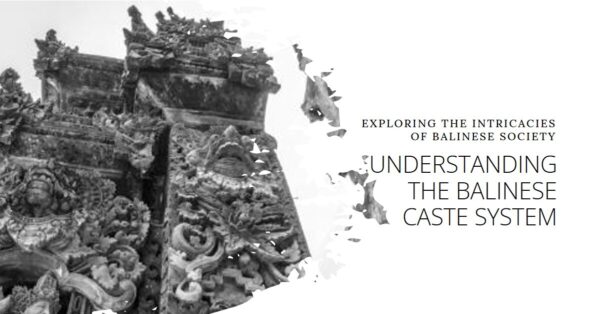The island of Bali, located east of Java in Indonesia, is renowned worldwide for its unique and vibrant Hindu culture. While making up only 1.5% of Indonesia’s total population, Balinese Hinduism plays an integral role in shaping the island’s artistic traditions, customs, social organization and daily spiritual practices.
Central to understanding Balinese society is the existence of a Hindu caste system, which divides the population into hierarchical occupational groups. Resembling but distinct from India’s caste hierarchy, Bali’s version is said to have originated in the 14th century with the arrival of the Hindu-Buddhist Majapahit Empire to the island. However, the system has evolved and adapted over centuries of Balinese history into a uniquely Balinese social classification.
This article will explore the Balinese caste system by tracing its origins, analyzing its structure and organization, examining associated cultural practices, and assessing its ongoing relevance in contemporary Balinese society amidst modernizing influences. The complex interplay between Hindu religious concepts, indigenous Balinese customs and modern socio-political thought underpins the ever-shifting nature of caste relations on the island today.
Origins and Influences
Arrival of Hinduism in Bali

The foundations of the Balinese caste system can be traced back to the 14th-16th century, when the island came under the control of the Hindu-Buddhist Majapahit Empire based in eastern Java. The Majapahit court had adopted and promoted the Indian Hindu concept of varna, or the division of society into four hierarchical castes:
- Brahmana (priests and teachers)
- Kshatriya (rulers and warriors)
- Vaishya (merchants and traders)
- Shudra (servants and laborers)
This varna system was gradually introduced to Bali as the Majapahit kings sent large numbers of nobles, artisans and priests to establish their rule and propagate their religion amongst the indigenous Balinese population. Intermixing between incoming Javanese and local Balinese elites over generations led to the emergence of a Balinese Kshatriya aristocracy that identified strongly with Majapahit culture.
Adaptation into Balinese Culture

The Hindu varna model did not translate directly into the Balinese context. Instead, it was adapted to fit the island’s existing social hierarchies and local power dynamics. The resulting caste system in Bali became:
- Brahmana – Pedandas (high priests)
- Kshatriya – Royalty and lower-ranking nobles
- Vaishya – Wesia (merchants)
- Shudra – Sudra (commoners), making up over 90% of the population
So while the Indian terminology was retained, the meanings and connotations associated with each Balinese caste differed from the Indian prototypes. The fluid, decentralized nature of Balinese state power also meant less correlation between caste and political authority compared to India.
Structure of the Balinese Caste System
Four Primary Castes

The Balinese Hindu population is divided into four main hereditary castes—Brahmana, Kshatriya, Vaishya and Shudra—based on conceptions of ritual status, social functions and degrees of spiritual purity.
Brahmana
The Brahmana form the highest priestly caste, responsible for rites and religious teachings. They are seen as the most spiritually pure for their mastery of Hindu scriptures and sacrifices. In Bali, the Brahmana caste is comprised of pedandas (high priests).
Kshatriya
The warrior and nobility caste rank next in the hierarchy, traditionally holding political power and military functions. Most Balinese royalty and aristocrats identified as Kshatriya, although frequent intermarriage meant fluid boundaries between the upper three castes over time.
Vaishya
Merchants and traders are grouped under the Vaishya caste in Bali, translated as Wesia. They wield economic power and occupy an intermediate status.
Shudra
Making up over 90% of Bali’s population, the Shudra (Sudra) form the lowest level of commoners—farmers, laborers and menial service providers associated with relative impurity.
Sub-Castes and Clans

Within each of these four Hindu varna castes exist numerous localized sub-divisions associated with specific village and clan groupings, as well as occupational castes. For example, metalworkers and carpenters have their own sub-castes spanning multiple villages. Meanwhile, the Sudra commoners are fragmented into a myriad of localized descent groups.
Interwoven with caste affiliations, these clan networks—called dadia and soroh—are integral to Balinese social identity and organization. Each clan congregation worships at a common ancestral temple, giving rise to strong bonds and hierarchies even within the same caste.
Outsider Caste – Anak Jaba

Those who fall outside the main Hindu caste hierarchy are grouped under Anak Jaba (‘children of the outside’). This residual category encompasses Balinese Muslims as well as members of indigenous non-Hindu tribes predating Majapahit influence. The Anak Jaba face the strictest caste restrictions for being outsiders to the Hindu system.
Social Implications and Practices
The Balinese caste system is not merely a symbolic classification but has profound impacts on cultural practices, social interactions and religious rituals within Balinese Hindu society.
Language and Modes of Address

Language plays a central role in marking caste standing and social relations on the island. Low, middle and high forms of the Balinese language exist, with vocabulary and style varying based on differences in caste between speakers. Using the inappropriate speech level, especially to address higher castes, is seen as deeply offensive.
Proper language use reinforces deference towards caste superiors. Brahmins and aristocrats even have specific titles—Ida Bagus for men and Ida Ayu for women—preceding their names. When unsure of another’s caste status, middle Balinese is used until further information comes to light. Mastery of linguistic levels is thus essential for smooth social functioning.
Religion and Ritual Participation

The Hindu religion underpins the spiritual basis for caste differentiation in Bali. Brahmin high priests (pedandas) officiate important ceremonies at temples and shrines which unite the community. Meanwhile, caste determines eligibility, access and roles for participation in such religious rituals.
Only high caste families can enter the innermost sanctum of a temple to pray, while Shudra worshippers are restricted to the outer courtyards. Temple festivals also feature processions organized by caste affiliation. This hierarchical interdependence binds together the spiritual life of Balinese society.
Marriage and Inheritance
Traditionally, caste exogamy was forbidden in Bali—high caste individuals were only permitted to marry within their own caste level. This ensured purity of descent and consolidation of social status. The child inherits the caste of both parents, transmitting membership down generations.
While prohibitions on inter-caste unions have relaxed significantly in urban areas, most Balinese Hindus still prefer to marry within their caste. Village customs also continue to encourage caste endogamy, especially for Sudras marrying other commoners.
Evolution and Contemporary Relevance
Factors Weakening Caste Rigidity
The Balinese caste system is not as rigidly enforced today compared to past centuries. Several key factors have contributed to this shift:
Education and Occupational Mobility
Modern schooling and professional training have opened new avenues for economic advancement unrelated to hereditary caste occupations. Sudra families achieving financial success weakens inherited social stratification.
Government Legislation
Indonesia’s constitutional ban on caste discrimination and emphasis on pancasila (five national principles) has accelerated reform of hierarchical Hindu practices, especially in cities.
Tourism Influx
Rising exposure to foreign ideas and egalitarian values has prompted re-examination of caste privileges among younger generations of Balinese Hindus.
Hindu Reform Movements
Balinese intellectuals are reinterpreting scriptural foundations of caste hierarchy by emphasizing spiritual equality in the Vedas. This shifts focus towards conduct and morality rather than birth as basis for social status.
Remaining Influence on Society
However, the caste system still underpins many facets of Balinese Hindu society today:
Cultural Customs
Language levels, naming practices, marriage preferences show that caste retains cultural relevance, especially in villages holding onto adat (customary law).
Subtle Hierarchy
Notions of ritual purity, ancestral status and social functions stemming from caste manifest through subtle words and actions in daily interactions.
Village Organization
Banjar (local councils) comprised of married men organize village life. Membership and leadership still depends greatly on caste background.
Political Landscape
High caste pedandas and royal descendants retain disproportionate influence in regional politics, heading Hindu institutions like the Parisada Hindu Dharma Bali.
Debates continue regarding whether to reform, reinterpret or reject the traditional caste system in the context of modernizing Balinese society over recent decades.
Conclusion
In summary, the intricate Balinese caste system has ancient historical roots but remains a dynamic social structure adapting to an evolving cultural landscape on the island. The Hindu varna model introduced in the 14th century intermixed with indigenous traditions, giving rise to a unique caste hierarchy that has shaped Balinese modes of communication, religious expression, cultural practices and collective identity.
While the rigidity and privileges associated with caste affiliation have weakened due to modernizing factors, subtle remnants of this spiritual worldview and social organization still influence interpersonal relations and community functioning for Balinese Hindus today. The enduring cultural significance and potential for future reform of the caste system continues to spark lively, unresolved debates within Balinese society even today.

